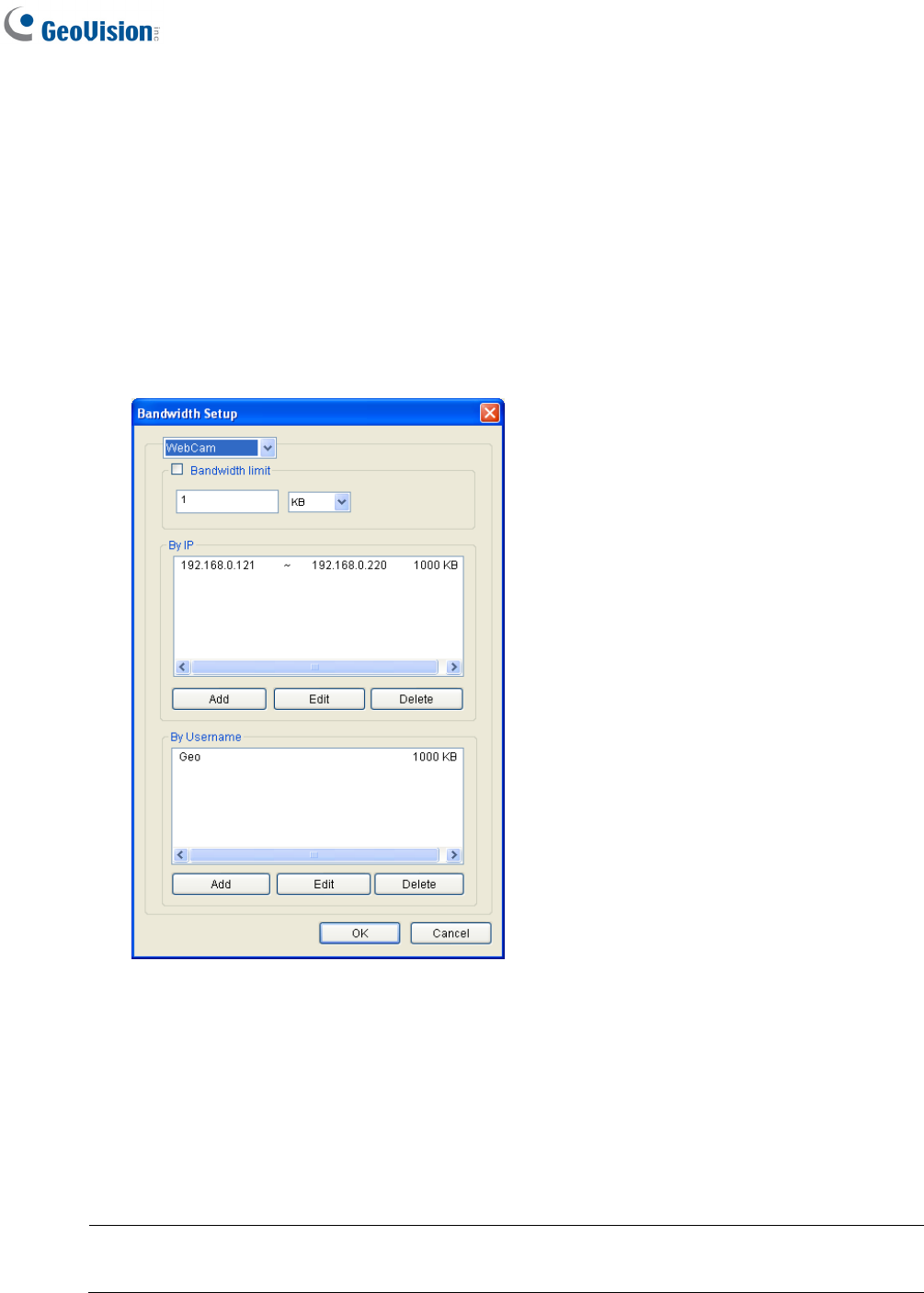Owner's manual
Table Of Contents
- Cards Supported
- Contents
- 1. Configuring Main System
- 1.1 Getting Started
- 1.2 System Configuration
- 1.2.1 Configuring Global Recording Parameters
- 1.2.2 Setting Data Storage
- 1.2.3 Adjusting Individual Camera
- 1.2.4 Setting Day and Night Recording Mode
- 1.2.5 Geo Mpeg4 Advanced Settings
- 1.2.6 Selecting Screen Layout
- 1.2.7 Launching from System Tray
- 1.2.8 Installing Cameras and Audios
- 1.2.9 Setting Auto Reboot
- 1.2.10 Setting Text Overlay
- 1.3 Audio and Video Settings
- 1.4 Camera Monitoring
- 1.5 Account and Password
- 1.6 System Idle Protection
- 1.7 System Log
- 1.8 Recording Schedule
- 1.9 Schedule Center
- 1.10 Hotline Notification
- 1.11 E-mail Notification
- 1.12 PTZ Control
- 1.13 Pop-up Live Video on Triggered Events
- 1.14 Video Noise Solutions
- 1.15 Picture-in-Picture View
- 1.16 Picture-and-Picture View
- 1.17 Fisheye View
- 1.18 Shortcuts
- 1.19 Touch Screen Support
- 1.20 System Tools
- 2. Hybrid and NVR Solution
- 3. Video Analysis
- 3.1 Object Tracking and Zooming
- 3.2 Advanced Single Camera Tracking
- 3.3 Digital Object Tracking
- 3.4 Object Counting and Intrusion Alarm
- 3.5 Object Index
- 3.6 Automatic Video Snapshots
- 3.7 Face Detection
- 3.8 Face Count
- 3.9 Unattended and Missing Object Detection
- 3.10 Privacy Mask Protection
- 3.11 Scene Change Detection
- 3.12 Panorama View
- 3.13 Video Defogging
- 3.14 Video Stabilization
- 3.15 Advanced Motion Detection
- 3.16 Crowd Detection
- 3.17 Advanced Scene Change Detection
- 3.18 Advanced Unattended Object Detection
- 3.19 Advanced Missing Object Detection
- 3.20 Video Analysis Schedule
- 3.21 Specifications
- 4. Video Playback
- 5. Backup, Deletion and Repair
- 6. I/O Applications
- 6.1 I/O Device Setup
- 6.2 I/O Control Panel
- 6.3 Advanced I/O Applications
- 6.4 Input State Detection
- 6.5 I/O Enable Setting
- 6.6 Advanced I/O Panel
- 6.6.1 The Advanced I/O Panel
- 6.6.2 Creating a Group for Cascade Triggers
- 6.6.3 Configuring the Advanced I/O Panel
- 6.6.4 Setting Up Mode Schedule
- 6.6.5 Quick Link
- 6.6.6 Forcing Output
- 6.6.7 Editing Background Image
- 6.6.8 System-Wide Triggers
- 6.6.9 The “Advanced Logical Input Status in Multicam” Option
- 6.6.10 Managing a Group of I/O Devices
- 6.7 Visual Automation
- 6.8 Virtual I/O Control
- 7. Point-Of-Sale (POS) Application
- 8. Remote Viewing
- 8.1 Remote Viewing Using a Web Browser
- 8.2 WebCam Server Settings
- 8.3 Single View Viewer
- 8.3.1 Control Panel
- 8.3.2 Server List
- 8.3.3 Video Recording
- 8.3.4 Alarm Notification
- 8.3.5 Video and Audio Configuration
- 8.3.6 Hardware-Compressed or Megapixel Stream
- 8.3.7 PTZ Control
- 8.3.8 Visual PTZ Control Panel
- 8.3.9 I/O Control
- 8.3.10 Visual Automation
- 8.3.11 Picture-in-Picture View
- 8.3.12 Picture-and-Picture View
- 8.3.13 Image Enhancement
- 8.3.14 Remote Configuration
- 8.4 2-Window Viewer
- 8.5 Multi-Window Viewer
- 8.6 Multi View Viewer
- 8.6.1 Starting Multi View
- 8.6.2 Host List
- 8.6.3 Channel Status Information
- 8.6.4 Adding a Host
- 8.6.5 Combining Multiple Hosts into a Single Host
- 8.6.6 Video Recording
- 8.6.7 Camera Polling
- 8.6.8 Hardware-Compressed or Megapixel Stream
- 8.6.9 PTZ Control
- 8.6.10 Visual PTZ Control Panel
- 8.6.11 Output Control
- 8.6.12 Remote ViewLog
- 8.6.13 System Configuration
- 8.6.14 Camera Status
- 8.6.15 Host Information
- 8.6.16 Icon Image Change
- 8.7 Multicast and Audio Broadcast
- 8.8 JPEG Image Viewer
- 8.9 Remote Playback
- 8.10 Remote ViewLog
- 8.11 Event List Query
- 8.12 Download Center
- 8.13 Mobile Phone Applications
- 9. E-Map Application
- 10. Short Message Service
- 11. Useful Utilities
- 11.1 Dynamic DNS
- 11.2 TwinDVR System
- 11.3 Watermark Viewer
- 11.4 Twin View Display
- 11.5 Windows Lockup
- 11.6 Authentication Server
- 11.7 Fast Backup and Restore
- 11.8 Hot-Swap Recording
- 11.9 Backup Server
- 11.10 Backup Viewer
- 11.11 Bandwidth Control Application
- 11.12 Report Generator
- 11.13 Spot Monitor Controller
- 11.14 Quad Spot Monitor Controller
- 11.15 Digital Matrix
- 11.16 GIS Recording
- 11.17 GV-IP Device Utility
- 11.18 MCamCtrl Utility
- Troubleshooting
- Appendix
- A. USB Dongle Required for IP Device Applications
- B. Supported PTZ Protocols and Models
- C. Certified PTZ Models for Object Tracking
- D. Certificated PTZ Models for Full Degree Pan and Tilt Control
- E. Supported IP Device Brands
- F. Supported GPRS Models
- G. Custom Icon Naming Chart for Multi View
- H. Display Ratio Supported by Panel Resolution

574
11.11.5 Bandwidth Setup
You can specify the total bandwidth allocated to a WebCam server. You can also specify the bandwidth
for certain users and IP addresses. This is especially useful when your network is busy or heavily
loaded.
1. Click Configure on the menu bar, and select Bandwidth Setup. A dialog box prompts for you to
select a host.
2. Select the desired WebCam server, and click OK. This dialog box appears.
Figure 11-62
Bandwidth limit: Select this option, and define the total bandwidth that the WebCam server
will be allowed to use on your network.
By IP: Click the Add button, and specify a specific IP address or a range of IP addresses and
its bandwidth limit.
By Username: Click the Add button, and specify the user name and its bandwidth limit.
Note: If you have already specified the total bandwidth to a WebCam server, it is prioritized before
the bandwidth limits set to user names and IP addresses.










